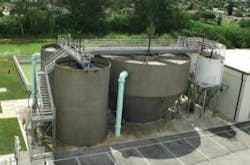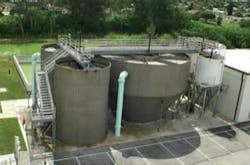Visiting Fulbright scholar to take knowledge of California's water resources to China
• Lan Fang has spent nearly a year at UC Riverside's Water Science and Policy Center
RIVERSIDE, CA, July 22, 2010 -- When Lan Fang, the deputy director of the Center for Rural Development Research at Shaanxi Normal University, China, received a Fulbright fellowship in 2009, she chose to work with Ariel Dinar, a professor of environmental economics and policy at the University of California, Riverside.
"I had read a book by Dr. Dinar when I was in Germany, working on my doctoral degree," said Fang, who subsequently contacted Dinar, the director of UC Riverside's Water Science and Policy Center. "He is a well-known economist who specializes in water resources -- a topic of interest to me and to China."
"California has excellent water transfer projects," said Fang, who teaches and researches environmental economics at Shaanxi Normal University. "I wanted to learn what I could during my stay here, and apply this knowledge in China."
Like California, China has an uneven distribution of water resources. While northern China comprises 60 percent of the country's landmass, it has only 20 percent of her water resources.
"Beijing is short of water," Fang said. "That's the situation also in Xi'an. So, water from the south needs to be efficiently transferred to the north of the country -- the reverse of California's situation."
Fang has worked on models used to test equity and efficiency issues pertaining to China's rural water management.
She explained that vast differences exist between California and China where water resources are concerned. Unlike California's farmers, China's farmers tend to be poor and unable to afford new technology for their fields. While sprinkler irrigation is frequently used in California's agricultural fields, it is a fairly uncommon technology in China.
"China will need to come up with incentives for farmers to adopt new technology," Fang said. "Given the uneven distribution of water resources in China, the questions I am addressing in my research are: What can the Chinese government do to improve the whole region's social welfare? Farmers near the head stream have more access to water. Should water subsidies be offered to poor farmers located downstream? Or is it better to subsidize their crops? The models I work on show that the most efficient path is to offer subsidies to areas downstream of a water source in order to improve the entire region's welfare."
Fang is impressed by how Californians are made aware of water conservation at an early age. She is impressed, too, by Southern California, and has enjoyed living in Riverside.
"I learned an enormous amount from my colleagues at UCR," she said. "They've given me many research suggestions and provided a lot of support throughout. Before coming to UCR, I had only a little idea about California's water crisis from reading about it. The Fulbright gave me an invaluable opportunity to see it all firsthand and work with it, and I am very grateful for that. I know I will return, if I get another chance."
Fang will leave the United States for China the first week of August 2010.
###

